Case Study How We Scaled an eCommerce Brand To £1.6 Million Using Facebook Ads (4.64x ROAS)
Fast growth is what EVERY eCommerce brand owner or marketing team wants.But it isn't as straight forward as it sounds.
You're probably sat there in a similar situation to what our client was in.
Trying to scale their Facebook Ads, whilst maintaining return on ad spend.
They were getting a 2.45x return on ad spend (ROAS) the month before hiring us. They knew it wasn’t sustainable and needed help to increase profitability and scalability.
Within the first month, we took them to a 5.4x return on ad spend.
The best part? We’ve now sold over £1,601,205 (and counting...) worth of products directly attributed to our Facebook ad campaigns.
We've also used these same strategies to generate £8.5m across our client ad accounts in the past 12 months.
So in this case study, we’ll be breaking down:
Trying to scale their Facebook Ads, whilst maintaining return on ad spend.
They were getting a 2.45x return on ad spend (ROAS) the month before hiring us. They knew it wasn’t sustainable and needed help to increase profitability and scalability.
Within the first month, we took them to a 5.4x return on ad spend.
The best part? We’ve now sold over £1,601,205 (and counting...) worth of products directly attributed to our Facebook ad campaigns.
We've also used these same strategies to generate £8.5m across our client ad accounts in the past 12 months.
So in this case study, we’ll be breaking down:
The best part?

We’ve now sold over £1,601,205 (and counting...) worth of products directly attributed to our Facebook ad campaigns.
We've also used these same strategies to generate £8.5m across our client ad accounts in the past 12 months.
Now we are working on further scaling, we are sure that this is not the limit

So in this case study, we’ll be breaking down:
1
Structure
The exact campaign structure we used to funnel over 92,000 customers.
2
Scaling
We scaled the budget from £300/day to £2,000+/day
3
ROAS increasing
The quick wins we implemented on day 1 that will increase your ROAS straight away.
How We Increased Sales by 118% (with the same Ad Spend)
Before our client hired us as their Facebook Ads Agency, they made roughly £2.45 for each pound they spend on Facebook Advertising.
Like many eCommerce and direct-to-consumer (DTC) brands, they followed a popular route to getting started: launching Facebook Ad campaigns in-house. Their Founder was in control of the campaigns amongst many other tasks.
But because they lacked time and expertise, they really struggled to get their campaigns off the ground.
But because they lacked time and expertise, they really struggled to get their campaigns off the ground.
We Offer Flexible Learning Formats
Find the best format for you to get effective results and fast progress
Before
Let’s take a look at what results looked like before they hired us in January
1 month later
Sure, they weren’t losing money with their new campaigns. But there were several account campaign structure problems, misallocation of budget and clear issues we could fix straight away.
Once we came on board in February, we spent the same amount… but increased sales by a massive 118%:
Once we came on board in February, we spent the same amount… but increased sales by a massive 118%:

All of that was possible with this five-step strategy:
- Changing the eCommerce Facebook Ads funnel structure
- Making the targeting strategy more precise
- Setting up the proper exclusions in Ad Sets.
- Scaling process for their profitable ads
- Focusing on international growth and localisation tactics
- TOFU85% for TOFU (Top of Funnel), targeting people who’d never heard of the brand. The goal was to reach as many people as possible and raise awareness for the relatively unknown brand. Having most of the budget allocated here allowed us to reach the most people.
- MOFU10% for MOFU (Middle of Funnel), targeting those who’d heard of the brand but still weren’t ready to buy. People needed extra information before visiting the site (or a gentle nudge back).
- BOFU
5% for BOFU (Bottom of Funnel), targeting those ready to buy but need an extra push. These were very product-focused ads. Since the audience was smaller and more defined, less budget was needed to reach them.
Refine Audience Targeting Based on the Funnel
Refine Audience Targeting Based on the Funnel
You can send all of those people to your website. But if you’re not tracking how they engage on your site, it’ll be impossible to see whether your Facebook Ads are getting the attribution they deserve.
Take some time to set-up your Facebook Pixel (and the events you’ll be tracking), if you haven’t done already.
You can then work on making your audience more refined based on the website data you’ve collected about them.
Here’s what that looked like for our client’s ad account.
Top of Funnel Targeting
People in TOFU don’t already know the brand we’re promoting.
...But that doesn’t mean we have to start our campaigns blind.Facebook allows advertisers to upload their customer data—such as website traffic or customer lists—in the form of a Custom Audience.
You can send all of those people to your website. But if you’re not tracking how they engage on your site, it’ll be impossible to see whether your Facebook Ads are getting the attribution they deserve.
Take some time to set-up your Facebook Pixel (and the events you’ll be tracking), if you haven’t done already.
You can then work on making your audience more refined based on the website data you’ve collected about them.
Here’s what that looked like for our client’s ad account.
Top of Funnel Targeting
People in TOFU don’t already know the brand we’re promoting.
...But that doesn’t mean we have to start our campaigns blind.Facebook allows advertisers to upload their customer data—such as website traffic or customer lists—in the form of a Custom Audience.
You can then turn that into a Lookalike audience; a group of Facebook users with similar qualities to those already on your list.
We created 3% Lookalike audiences based on three groups of people:
You’re using Facebook's algorithm and ability to target your ideal audience, based on people who’ve already done that action before. (It’s much more effective than targeting anyone and everyone with a basic interest in your industry.)
- Those who’ve purchased
- Those who’ve added items to their cart
- Those who’ve viewed content on the website
You’re using Facebook's algorithm and ability to target your ideal audience, based on people who’ve already done that action before. (It’s much more effective than targeting anyone and everyone with a basic interest in your industry.)
As for the rest of our TOFU targeting strategy, we added a handful of interests that our customers needed to be interested in.
There’s a huge overlap of interests, though. Combining them keeps the account structure clean and manageable.
We also went broad, targeting anyone between 18 and 65+.
I know: going broad with targeting doesn’t sound logical initially. But it gives Facebook free reign to take learnings from the Pixel, and bid on who it deems is the correct audience.
Having big, broad audiences really allows for scale too. If you want to reach those big budgets, you need to think broader & wider.
As for creatives, we ran with:
Your top of funnel ads should also focus on testing multiple messaging variations.
Different angles will make different people convert, and because they’re brand new to your brand, you don’t know what headlines, descriptions, or ad copy will hook them in.
We made 3 variations of messaging to test this, whilst also continuously tweaking messaging depending on seasonality and time of year.
We also went broad, targeting anyone between 18 and 65+.
I know: going broad with targeting doesn’t sound logical initially. But it gives Facebook free reign to take learnings from the Pixel, and bid on who it deems is the correct audience.
Having big, broad audiences really allows for scale too. If you want to reach those big budgets, you need to think broader & wider.
As for creatives, we ran with:
- 1x Carousel
- 3x Single Images
- 1x Video (with 3x variations of the thumbnail)
Your top of funnel ads should also focus on testing multiple messaging variations.
Different angles will make different people convert, and because they’re brand new to your brand, you don’t know what headlines, descriptions, or ad copy will hook them in.
We made 3 variations of messaging to test this, whilst also continuously tweaking messaging depending on seasonality and time of year.
Middle of Funnel Targeting
Once people had viewed and engaged with the top of funnel creatives, they’d move to the middle of the advertising funnel we’d set up.
We had three different audience groups for this, including people who’d:
People during this stage of the sales funnel already know who you are. They need some convincing that your product is the best one to buy.
Social proof is your best friend here. Ad copy mentioning how many people who’ve bought your product, your 5* rating and customer testimonials are all convincing messaging that positions you as the best brand or product for that person.
For this particular client, we used creative that explained why they started the brand, how it then helps the customer & statistics that backed up that thought process to provide a logical reason to buy.
Plus we used lots and lots of user-generated content. This should always be added into any brands funnel.
Bottom of Funnel Targeting
Not everyone you’re targeting your middle of the funnel content will buy instantly.
Chances are, people still have last-minute questions about the product they want to buy. And whilst they might’ve added the product to their online cart, as many as 69% can abandon their purchase and leave your site.
Our final audience consisted of those who had added items to their cart within the last 30 days.
Facebook’s Pixel can collect the product data of items they’ve added, and find the matching profile so that you can show the exact product a person left in their online cart through Facebook ads.
This means you can be hard-hitting your copy when your audience has added items to their cart. They’ve already shown intent to purchase—but something small has got in their way.
More often than not, that’s extra shipping costs, a complicated checkout process, or slow delivery times.
Your ad copy can ease those last-minute issues and nudge them back to the site to purchase the product they were interested in.
We had three different audience groups for this, including people who’d:
- Watched at least 25% of our video ad within the last 30 days
- Engaged with Facebook and Instagram within the last 30 days
- Visited any page on the website within the last 30 days
People during this stage of the sales funnel already know who you are. They need some convincing that your product is the best one to buy.
Social proof is your best friend here. Ad copy mentioning how many people who’ve bought your product, your 5* rating and customer testimonials are all convincing messaging that positions you as the best brand or product for that person.
For this particular client, we used creative that explained why they started the brand, how it then helps the customer & statistics that backed up that thought process to provide a logical reason to buy.
Plus we used lots and lots of user-generated content. This should always be added into any brands funnel.
Bottom of Funnel Targeting
Not everyone you’re targeting your middle of the funnel content will buy instantly.
Chances are, people still have last-minute questions about the product they want to buy. And whilst they might’ve added the product to their online cart, as many as 69% can abandon their purchase and leave your site.
Our final audience consisted of those who had added items to their cart within the last 30 days.
Facebook’s Pixel can collect the product data of items they’ve added, and find the matching profile so that you can show the exact product a person left in their online cart through Facebook ads.
This means you can be hard-hitting your copy when your audience has added items to their cart. They’ve already shown intent to purchase—but something small has got in their way.
More often than not, that’s extra shipping costs, a complicated checkout process, or slow delivery times.
Your ad copy can ease those last-minute issues and nudge them back to the site to purchase the product they were interested in.
Not only that, but excluding other audiences from each Ad Set makes sure the frequency for your top of the funnel campaigns doesn’t skyrocket.
Since our client’s product prices range between £10—£15, we chose to do a 30 day period for people visiting the website. Items are typically an impulse purchase with a small consideration period, so after a month has passed, there’s a good chance they’ve forgotten about buying the item.
However, if it’s a higher ticket product that requires more touchpoints, we would recommend increasing this to 90 days—or whatever your typical purchase cycle looks like.
Since our client’s product prices range between £10—£15, we chose to do a 30 day period for people visiting the website. Items are typically an impulse purchase with a small consideration period, so after a month has passed, there’s a good chance they’ve forgotten about buying the item.
However, if it’s a higher ticket product that requires more touchpoints, we would recommend increasing this to 90 days—or whatever your typical purchase cycle looks like.
How to Scale Your Facebook Ad Campaigns
- Campaign Budget OptimisationOnce we started to see some results from our funnel-based Facebook Ads structure, scaling was the next task.
You can be pretty aggressive with scaling using Campaign Budget Optimisation.As it works by distributing your budget in the most effective way between each of your ad sets, to ensure a bigger budget goes towards your highest-performing ones.But it should still be done with some caution and close monitoring.Here’s how we did it. - Increase Audience SizesOur first step to scaling our client’s Facebook Ads was to increase our Lookalike audiences' width, from 3% to 5%, and then 10%.We now don’t work with anything smaller.Why? Because Facebook wants you to feed it broad audiences.Small-sized audiences will kill your campaign once you start to push the budget because you’re restricting how many people are in the audience pool that actually sees your ads.You’ll use the budget, reaching the same person over and over again.Your ads get boring (and in the worst case, can frustrate your target audience into clicking “I don’t want to this ad anymore.”)
- Fine-tune Ad CopySpeaking of testing what performs best, fine-tuning the Facebook Ad copy was next on our scaling to-do list.
You’ve got a bigger audience now. But adding more angles within your Facebook Ads copy will boost your chance of delivering a message each person wants to see.
Think about it: your audience size of 1,000,000 might have three winning headlines.
But when you expand your audience to 5,000,000 people, you’re casting the net wider. They might not be interested in the three headlines your focused group were. They want something different.
The simplest way to do this is by surveying your customers and understanding why they bought the product you’re advertising.
Read your ads' comments, see why people are buying it, or what questions they have.
Those are great places to fine-tune messaging and bring the customers’ own voice into your advertising copy.
The bottom line: One product can help people in multiple different ways, so don’t stay in one lane. Open your eyes and test which angle works best with each audience group, depending on what stage they’re at in the sales funnel
Create Additional Campaigns for Gifting Periods
Evergreen Facebook Ads can scale easily. Open your audience wider and get creative with different messaging to see which they engage with.
But you can also scale by adding brand new campaigns centred around a time-specific period.
We did this by creating gifting campaigns which included the targeting of people with:
But you can also scale by adding brand new campaigns centred around a time-specific period.
We did this by creating gifting campaigns which included the targeting of people with:
- An upcoming Birthday.
- Friends with upcoming birthdays.
- An interest in ‘Birthday’.
- An interest in ‘Gift’.
- Aged 18—65+.
- International Growth and LocalisationWe started with the UK… and mastered it.
Then it was time to explore Europe.
International growth isn’t as straightforward as you might initially think, though. There are some extra things to consider when running Facebook Ads for different countries. - The localisation of the LanguageIt goes without saying that your Facebook Ads need to make sense to the people you’re targeting.
That includes the language you’re writing in.
Translating your campaigns is essential—especially if English isn’t that country’s main language.
(Hiring a language expert can make sure it’s error-free. Google Translate is good, but not perfect.)
We did this by using a translator & social media assistant on Upwork. So, not only could they translate all ad copy, but they responded to all comments we received on our Facebook Ad posts and direct messages.
You don’t just need to do this for your Facebook Ads themselves, though.
Driving people to a website which isn’t in their own language is a huge waste of budget. You’ll get them hooked with the translated copy, yet take them to a dead-end: a website they don’t understand.
So make sure the URLs you’re promoting with your campaigns go to landing pages in the same language. - Taking Culture into AccountSpeaking of tweaking your messaging, international Facebook Ads also need more attention when it comes to the overall messaging.
Every country has different cultures and reasons for buying a product; so they'll respond differently to messaging/positioning.
For example, Germany is very environmentally friendly and cares about sustainability, so we highlighted areas in the product to match this. - Test, Test… and Test AgainSome countries will work when you branch out, and some won’t.
You won’t know until you test.
That’s the foundation of any Facebook Ads strategy. You can have the smartest ideas and think you know the people you’re targeting. But until you actually spend money to run your ads, you won’t have the data to make smarter decisions.
The key is to have patience—but learn fast.
Remember that you’re spending cash whilst you’re running your international tests.
Give your international adverts some time to bed-in, and keep a close eye on results.
You can either edit low-performing ads, try again, or cut them entirely and focus on those performing best.
Don’t waste time or budget by keeping your worst campaigns live. - Fancy Seeing the Same Results From Your Facebook Ad Campaigns?There’s no reason why you can’t get a 4x RoAS from your own Facebook Ads strategy, or increases your ROAS even more than you have right now with the right structure in place.
So if you don’t have enough time to implement yourself, or you need a trusted pair of hands to create a bespoke Facebook Ads strategy for you, click the button below to book in a free strategy call with our team.
Amsterdam
Kraanspoor 50, 1033SE Amsterdam,
The Netherlands
Telephone:+31(0)20-798-6657
The Netherlands
Telephone:+31(0)20-798-6657
Shanghai
#236, Krspace, No.328
Huashan Road, Jingan District,
Shanghai, China
Huashan Road, Jingan District,
Shanghai, China

